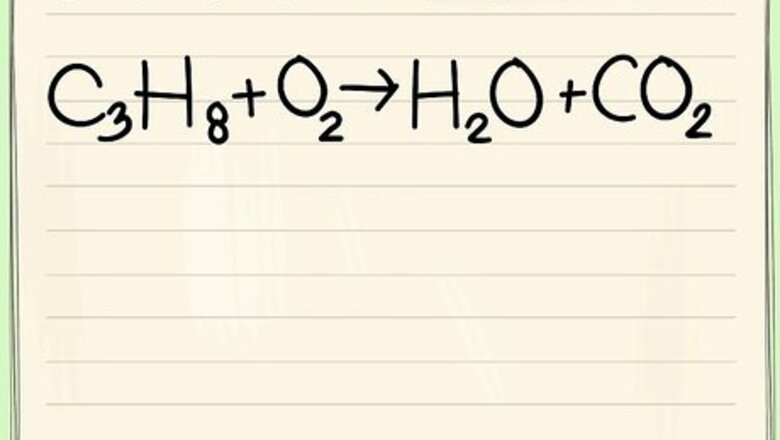
views
Doing a Traditional Balance
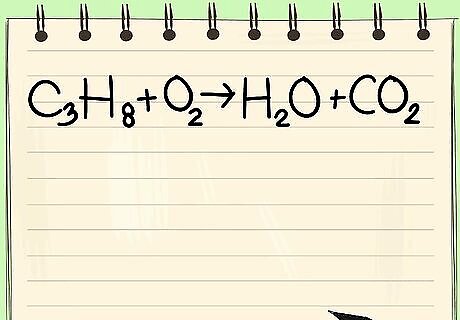
Write down your given equation. For this example, you will use: C3H8 + O2 --> H2O + CO2 This reaction occurs when propane (C3H8) is burned in the presence of oxygen to produce water and carbon dioxide.

Write down the number of atoms per element. Do this for each side of the equation. Look at the subscripts next to each atom to find the number of atoms in the equation. When writing it out, it's a good idea to connect it back to the original equation, noting how each element appears. For example, you have 3 oxygen atoms on the right side, but that total results from addition. Left side: 3 carbon (C3), 8 hydrogen (H8) and 2 oxygen (O2). Right side: 1 carbon (C), 2 hydrogen (H2) and 3 oxygen (O + O2).
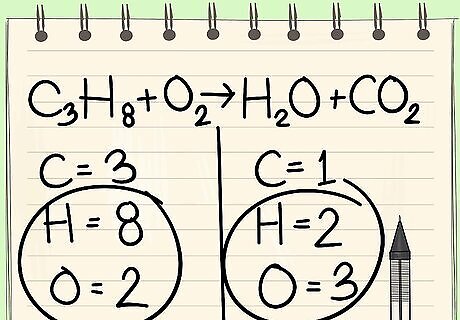
Save hydrogen and oxygen for last, as they are often on both sides. Hydrogen and oxygen are both common in molecules, so it's likely that you'll have them on both sides of your equation. It's best to balance them last. You'll need to recount your atoms before balancing the hydrogen and oxygen, as you'll likely need to use coefficients to balance the other atoms in the equation.

Start with single elements. If you have more than one element left to balance, select the element that appears in only a single molecule of reactants and in only a single molecule of products. This means that you will need to balance the carbon atoms first.
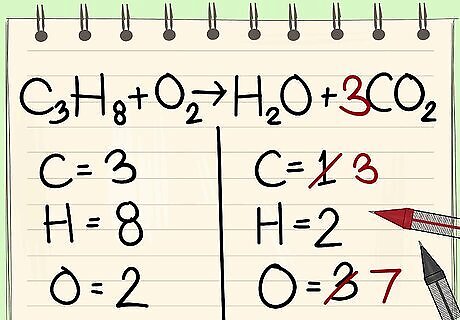
Use a coefficient to balance the single carbon atom. Add a coefficient to the single carbon atom on the right of the equation to balance it with the 3 carbon atoms on the left of the equation. C3H8 + O2 --> H2O + 3CO2 The coefficient 3 in front of carbon on the right side indicates 3 carbon atoms just as the subscript 3 on the left side indicates 3 carbon atoms. In a chemical equation, you can change coefficients, but you must never alter the subscripts.

Balance the hydrogen atoms next. Since you have balanced all atoms besides the hydrogen and oxygen, you can address the hydrogen atoms. You have 8 on the left side. So you'll need 8 on the right side. Use a coefficient to achieve this. C3H8 + O2 --> 4H2O + 3CO2 On the right side, you now added a 4 as the coefficient because the subscript showed that you already had 2 hydrogen atoms. When you multiply the coefficient 4 times by the subscript 2, you end up with 8.
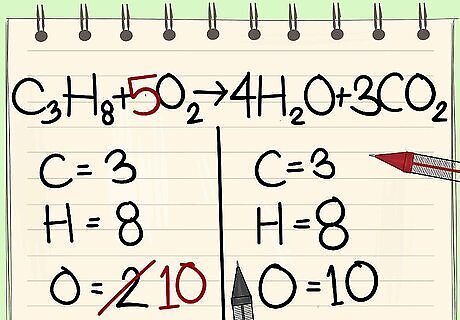
Balance the oxygen atoms. Remember to account for the coefficients that you've used to balance out the other atoms. Because you've added coefficients to the molecules on the right side of the equation, the number of oxygen atoms has changed. You now have 4 oxygen atoms in the water molecules and 6 oxygen atoms in the carbon dioxide molecules. That makes a total of 10 oxygen atoms. Add a coefficient of 5 to the oxygen molecule on the left side of the equation. You now have 10 oxygen atoms on each side. C3H8 + 5O2 --> 4H2O + 3CO2.Balance Chemical Equations Step 7Bullet3 Version 2.jpg The carbon, hydrogen, and oxygen atoms are balanced. Your equation is complete. The other 6 atoms of oxygen come from 3CO2.(3x2=6 atoms of oxygen+ the other 4=10)
Completing an Algebraic Balance

Write down the given equation. For this example, we will use: PCl5 + H2O --> H3PO4 + HCl
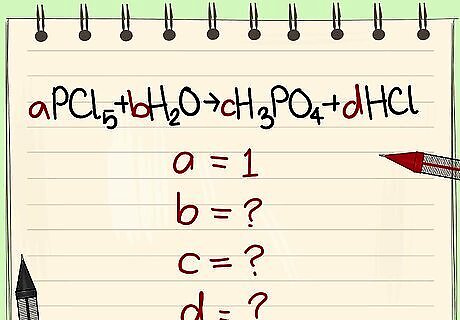
Assign a letter to each substance. aPCl5 + bH2O --> cH3PO4 + dHCl

Check the number of each element found on both sides, and set those equal to each other. aPCl5 + bH2O --> cH3PO4 + dHCl On the left side, there are 2b atoms of hydrogen (2 for every molecule of H2O), while on the right side, there are 3c+d atoms of hydrogen (3 for every molecule of H3PO4 and 1 for every molecule of HCl). Since the number of atoms of hydrogen has to be equal on both sides, 2b must be equal to 3c+d. Do this for each element. P: a=c Cl: 5a=d H: 2b=3c+d

Solve this system of equations to get the numeric value for all the coefficients. Since there are more variables than equations, there are multiple solutions. You must find the one where every variable is in its smallest, non-fractional form. To quickly do this, take one variable and assign a value to it. Let's make a = 1. Then start solving the system of equations to get the following values: Since P: a = c, we know that c = 1. Since Cl: 5a = d, we know that d = 5 Since H: 2b = 3c + d, we can calculate b like this: 2b = 3(1) + 5 2b = 3 + 5 2b = 8 b=4 This shows us the values are as follows: a = 1 b = 4 c = 1 d = 5 If the value you assigned returns fractional values, just multiply all values by the least common multiple (LCM) of the denominators to get rid of the fractions. If there is only one fraction, multiply all values by that values denominator. If the value you assigned returns coefficients that have a greatest common factor (GCF), simplify the chemical equation by dividing each value by the GCF.



















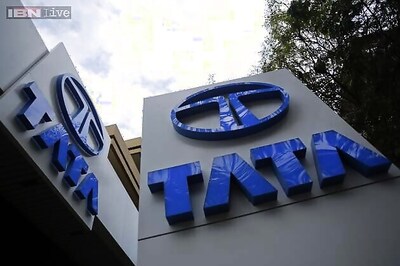
Comments
0 comment